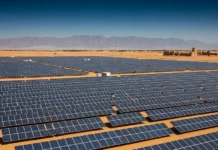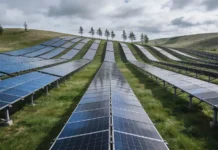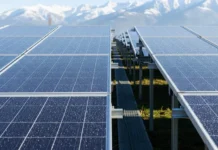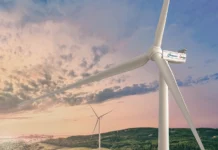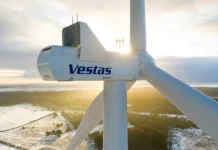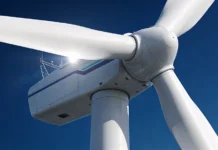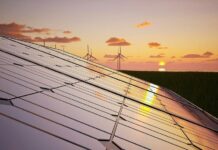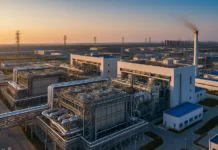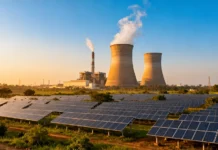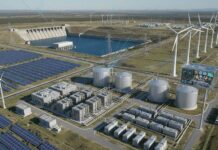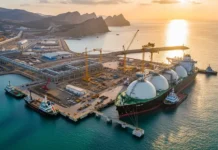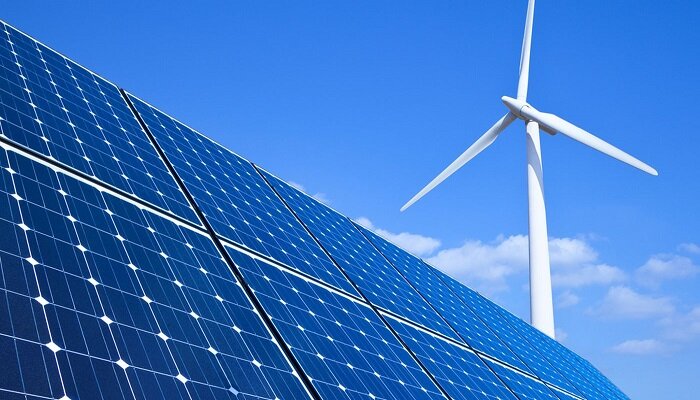The current analysis by Wood Mackenzie forecasts that by 2033, global photovoltaic deployment will increase by 3.8 TWac of new project capacity, compared to 1.6 TW of wind power, with energy storage expected to experience a 640% growth.
From 2024 to 2033, developers are projected to bring online more than 5.4 terawatts (TWac) of new solar and wind capacity, which will raise the cumulative global total to 8 TWac. This increase is part of global efforts to electrify economies and achieve decarbonization targets.
The capacity of energy storage (excluding pumped hydro) is anticipated to grow by over 600%, with nearly 1 TW of new capacity expected to be operational in the same period. This rapid expansion positions energy storage as one of the fastest-growing markets in the power industry, driven by challenges related to integrating renewables.
Luke Lewandowski, vice president of global renewables research at Wood Mackenzie, highlighted that the unprecedented global demand for renewables is propelled by country-level policy targets, technological advancements, and concerns about energy security. He mentioned the evolution of integrated power technology solutions and the significant increase in storage-paired capacity growth despite factors such as inflation, grid constraints, and permitting challenges.
The annual solar and wind capacity of new solar and wind installations in 2023 was around 500 GW, and it is expected to average 560 GW annually over the 10-year outlook. China is expected to continue its dominance in solar, energy storage, and wind uptake, with a forecast of 3.5 TWac to be grid-connected between 2024 and 2033.
Lewandowski also noted that solar PV is leading the deployment race, accounting for 59% of the global capacity expected to come online between 2024 and 2033. Meanwhile, energy storage is projected to have a well-balanced geographic footprint throughout the outlook period, reflecting its important role in enabling the availability of renewable power.
Solar
The cumulative installed global solar PV capacity is expected to nearly quadruple from 2024 to 2033.
The rapid deployment of solar was fueled by ultra-low module prices in Europe and China last year, and this trend is expected to continue in the near future. However, grid constraints and lower power prices will impact markets in other regions. China is projected to account for 50% of the capacity growth in this period, with a forecast of 4.7 terawatts direct current (TWdc) to be built between 2024 and 2033. Maximizing solar PV and wind power capacity in the next decade will depend on additional technological developments such as expanding grid infrastructure, incentivizing flexibility solutions, and electrification in transportation and heating.
In 2023, significant declines in Chinese module prices and tight project deadlines led to a 150% annual growth in installations across all solar PV segments. Year-on-year increases in annual installed capacity are expected to continue until 2026, followed by a two-year slowdown before the next round of higher deployment. In the first quarter, the US installed more solar than in the entire year of 2019, while installations in China increased by 36% year-on-year, and new capacity in India through Q1 amounted to 85% of the total capacity installed in 2023. However, Europe’s distributed PV boom has started to diminish, with first-quarter residential installations contracting by over 30% in Germany and over 50% in the Netherlands as retail rates decrease.
Energy Storage
Global cumulative capacity is projected to increase sixfold by the end of 2033, surpassing 1 TW/3 TWh. In 2023, global energy storage deployment achieved record-breaking growth of 162% compared to 2022, with 45 GW/100 GWh installed. The market is expected to reach 159 GW/358 GWh by the end of 2024, and a remarkable 636% increase, adding 926 GW/2789 GWh, is projected between 2024 and 2033. China remains the global leader in the energy storage market, with an average of 42 GW/120 GWh annual capacity additions forecasted over the next 10 years. In Europe, grid-scale projects are thriving, while distributed segment demand decreased by 23% in 2024 as retail rates stabilize. Nevertheless, distributed market growth is expected to resume from 2026 due to lower system costs and regulatory changes.
Wind
The global wind power industry is expected to add more than 1.7 TW over the next 10 years. China’s central government’s policy support is driving the world’s largest wind market, with China forecasted to install 91.5 GW annually on average. But challenges with grid access, permitting, financing, as well as supply chain availability happen to be impacting the outlook for 2024 to 2026, pushing the capacity into 2027 and beyond 10-year horizon. Wind additions globally will average 85 GW per year, with the Americas region accounting for 230 GW through 2033, as offshore wind gains traction and government incentives drive growth. The offshore wind sector is expected to connect 39 GW of capacity annually from 2024 to 2033, totaling 386 GW, with over 50% of the total offshore wind capacity installed in China.



